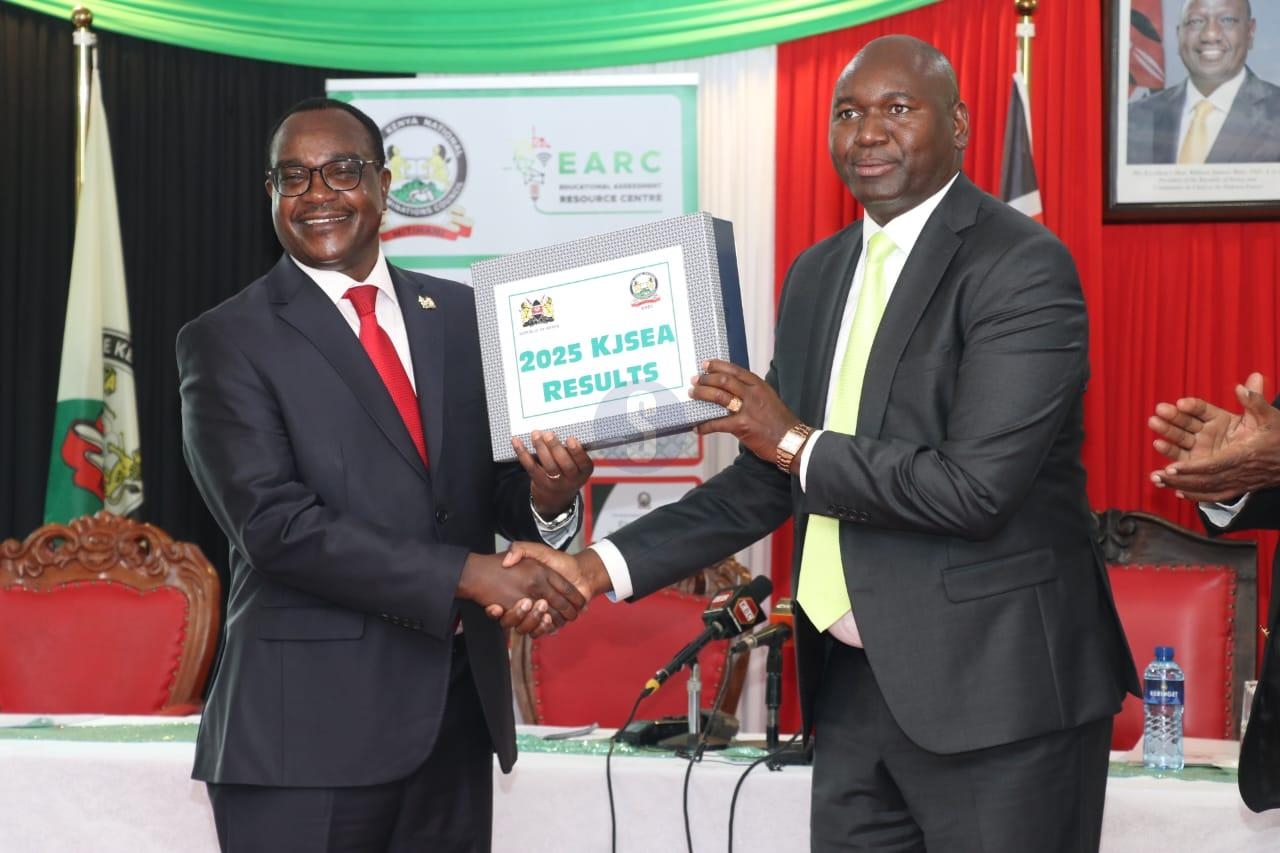When dredging began in Lamu to pave way for the construction of a 32-berth port, fishermen complained about fish being depleted, costing them their jobs.
More than 4,600 fishermen in Lamu dragged the state to court, claiming the dredging violated the community’s cultural, fishing and health rights.
The Lamu residents were opposed to the design and implementation of the Sh310 billion Lamu Port-South Sudan-Ethiopia-Transport Corridor project, otherwise known as Lapsset.
The project, as initially designed, involved several components.
These included a 32-berth port at Manda Bay in Lamu and an inter-regional standard gauge railway from Lamu to Juba (capital of South Sudan) and Addis Ababa (Ethiopia).
There was also a road network and oil pipelines from South Sudan and Ethiopia, an oil refinery at Bargoni, three international airports and three resort cities, namely Lamu, Isiolo and Lake Turkana shores.
Additionally, it was designed to include a multi-purpose High Grand Falls Dam on Tana River.
The petition was launched at the High Court in Nairobi on January 25, 2012.
On January 26, 2012, the file was transferred through an order of the court to the High Court in Malindi, being the nearest court with jurisdiction over the area in which the subject matter was situated.
As the case proceeded, John Dyer, a resident of Lamu for more than 14 years and the then chairman of the Lamu Tourism Association, swore an affidavit filed on April 24, 2017. He also testified in court.
Dyer’s evidence was that tourism plays a key role in the economy of Lamu, yet his association was not involved in the Environmental and Social Impact Assessment (ESIA) process.
"The marine ecosystem in Lamu is complex in that it comprises the largest mangrove forests in Kenya, fish breeding grounds, sea grass and coral reefs," he said.
All of these are critical for sea life, which includes rare species of fish and tortoise.
Dyer said mangrove forests and corals offer protection to shorelines against sea waves.
On the effects of dredging, Dyer said sea pollution would hurt sea life and tourism.
He cited the absence of mitigation in the ESIA Report to counter the adverse effects of the Lapsset Project, and specifically pointed out the absence of provisions to mitigate against the loss of corals and fishing.
Zephania Ouma from Nema, the then acting director for compliance and enforcement, denied breach of the petitioners' fundamental rights or of its obligations under the EMCA.
He said the ESIA Report for the initial three berths and associated infrastructure was generated after the ESIA process and submitted to Nema.
Many other parties also testified in court.
The marine ecosystem in Lamu is complex in that it comprises the largest mangrove forests in Kenya, fish breeding grounds, sea grass and coral reefs
HIGH COURT RULING
In May 2018, the Malindi High Court ruled in favour of the fishermen, saying the port project had failed to meet basic constitutional and legal requirements.
The court ordered that the fishermen be compensated Sh1.76 billion.
Last year, the compensation process was halted after the Ethics and Anti-Corruption Commission moved to court, seeking to have the list of 4,734 people investigated.
According to the anti-graft agency, complaints had emerged that some of the fishermen and boat owners were allegedly not eligible for payment, and there were other genuine cases left out.
The Kenya Ports Authority has, however, announced that it had concluded the verification process of the more than 4,000 fishermen set to receive compensation after their livelihoods were affected by the construction of Lamu Port.
They will receive Sh1.1 billion, as directed by the Court of Appeal, following a rigorous verification process, the KPA management said in a statement.
“The process has finally culminated in a successful outcome for most fishermen and boat owners, where each will get Sh241,714.32 from the 65 per cent of the total Lamu compensation amount of Sh1.7 billion,” KPA's statement said.
The remaining 35 per cent (Sh600,000) will be given in the second phase of compensation, which is expected to empower the fishermen for sustainable development programmes.
But even as fisherfolk cry foul about the diminishing of fish, the dredging has also had a huge impact on mangroves.
At the Kitangani beach, the dumping of sand as a result of dredging had a massive impact on the mangroves.
The Kitangani beach was initially not there but was brought about by the impact of dumping sand from the dredging.
The sand blocked the water channels. In the area, the soils are sandy and do not support the growth of mangroves.
At the beach, there are also hundreds of snail shells.
“We believe in listening to the voice of nature,” Wetlands International EA regional programme officer Lilian Nyaega said.
“What these snail shells are telling us is that there is a lack of oxygen. We need to find a solution that addresses these issues.”
Nyaega said the site needs to be monitored.
“Tunnels should be generated to ensure water comes in and out on a regular basis,” she said.
“It was important for us to start monitoring. We had to look at soil properties when we began. We had to look at how saline the water is.”
Nyaega said they have a monitoring protocol that enables them to identify how well the site is doing.
“It is motivating to see the changes when you see the soil is becoming better to support mangroves compared to the way it was.”
She said in areas that had seen improvement, the water is becoming less salty and mangroves are starting to grow again.
Experts said the drenching of the ocean added to the challenges that were brought about by El Nino several years ago, where hundreds of mangroves were affected.
SEARCH FOR SOLUTIONS
Wetlands International, with the help of other partners, is now trying to cure the challenges brought about by dredging.
The organisation has also enlisted the help of local communities, such as Pate Resources and the Tourism Initiative.
The community has had its capacity enhanced.
Husna Bakari, vice secretary for the Pate Resources and Tourism Initiative, says some of the restoration initiatives they had been carrying out flopped due to a lack of knowledge and skills on how to restore mangroves.
Bakari said their capacity was built by Wetlands International through community-based ecological mangrove restoration.
“We were taught the importance of testing salinity and the importance of hydrology in mangrove restoration,” she said.
Wetlands International is the only global not-for-profit organisation dedicated to the conservation and restoration of wetlands.
Mangroves are salt-tolerant trees and shrubs in the intertidal regions of the tropical and subtropical coastlines, thriving where fresh water mixes with seawater.
They grow in five counties: Lamu, Tana River, Kilifi, Mombasa and Kwale.
Mangroves are in tidal estuaries, creeks and protected bays.
Lamu has the most mangrove forests at 92,293 acres, followed by Kilifi at 21,092 acres, Kwale at 20,643 acres, Mombasa at 9,318 acres and Tana River at 8 acres.
About 60 per cent of Kenya’s mangroves occur in Lamu county, which also harbours eight of the nine species found in the country.
Lamu’s communities have had a long history and cultural connection to the mangroves, utilising them for various purposes, like construction, fuel and traditional practices.
Restricting access to these resources entirely could have had significant social and economic consequences.
Lamu is the only county where mangrove harvesting is legal.
Logging is allowed under strict rules by the Kenya Forest Service to prevent the degradation of the ecosystem.
BREEDING GROUNDS
An estimated two-thirds of the fish in Kenya spend part of their lives in the mangroves, which act as their breeding and nursery grounds.
A mangrove ecosystem is, therefore, important in enhancing fishery production. And since fishing is a main source of income for coastal communities, the fisheries supported by the mangrove ecosystem become an important source of livelihood.
Through Pate Resources and Tourism Initiative, Wetlands International has actively involved the community in Pate in mangrove restoration efforts.
In 2022, Wetlands International conducted participatory mapping of degraded areas and established nurseries for restoration, including at Chukutu in Pate.
The degradation in Chukutu resulted from limestone mining, which was used as construction material for local houses.
In the past, the community would cut mangroves to fuel the kiln during mining activities.
Due to the high calorific content of the roots, they would uproot the mangrove trees, causing loss.
Previous attempts by the community to replant mangroves using their traditional knowledge were unsuccessful, but partners have now rehabilitated 3.7 hectares through the community-based ecological mangrove (CBEMR) approach.
Since they began working in Lamu county in 2022, Wetlands International has made progress in ecological mangrove restoration efforts.
Through combined direct and indirect interventions, we have restored 102 hectares of degraded mangrove areas in Lamu.
Their interventions are mainly focused on Pate Island and the Southern Swamps.
They work with local community groups on conservation and restoration, livelihoods and policy support.
The groups include the Pate Resources and Tourism Initiative, Matondoni Women and Mkunumbi Community Forest Association.
They also collaborate with the national and county governments.
Wetlands International Lamu programmes officer Shawlet Cherono says mangrove restoration is a long process.
It entails looking at site history, social issues impacting the site and the best approach to be used when one wants to restore an area.
“For us, we have to go into details and take our time to understand what we are dealing with,” Cherono says.
“For instance, this Chukutu site was degraded like 10 years ago, and they have been trying to do restoration, but their efforts are failing because they do not understand what has really happened.”
CAPACITY BUILIDNG
The CBEMR approach takes into account mangrove biology and ecology in addition to the sociological aspects that can affect restoration efforts.
By so doing, it mimics natural processes, such as regeneration, to produce a more biodiverse mangrove forest.
Active planting is second to regeneration if the latter proves difficult after interventions to correct the conditions that enable natural regrowth.
Cherono said community-based ecological mangrove restoration has contributed to the success of the site in terms of understanding what species to use, where not to plant, and site dynamics, including what happened and how to plant.
She said stressors in some areas need to be removed for restoration efforts to succeed.
The stressors came about as a result of the cutting of the roots of the trees by the local community for limestone production using kilns.
“Though limestone production using kilns was banned years ago, we still feel the effect to date,” she said.
All the mature trees had been cut down, meaning there were no seeds to start natural regeneration.
“We needed to introduce the seeds, and we used the nurseries for this case,” she said.
If the site is stressed, propagules are sometimes weak, but if strengthened in nurseries, they have a chance to survive.
The ecological dynamics of mangoes include salinity, PH, water flashing in and out and species dynamics, or which species goes where.
The species of mangrove introduced to the Chukuchu site were Rhizophora mucronata and Bruguiera gymnorrhiza.
The community was taken through training on how to read some of the parameters before embarking on any restoration efforts.
Now the community knows the PH needed for a specific site and also the salinity.
Cherono said ceremonial planting with photo opportunities has been happening for a long time, only for mangroves to die later.
She said restoration is a process that takes time.
“When you don’t understand your site, you just go and plant at different levels, and that doesn’t work,” she said.
“You need to understand it is a slow process. As wetlands, we have started small, but we are going to reach a wider network.”
She said they already have community champions to help ensure that restoration efforts succeed.















